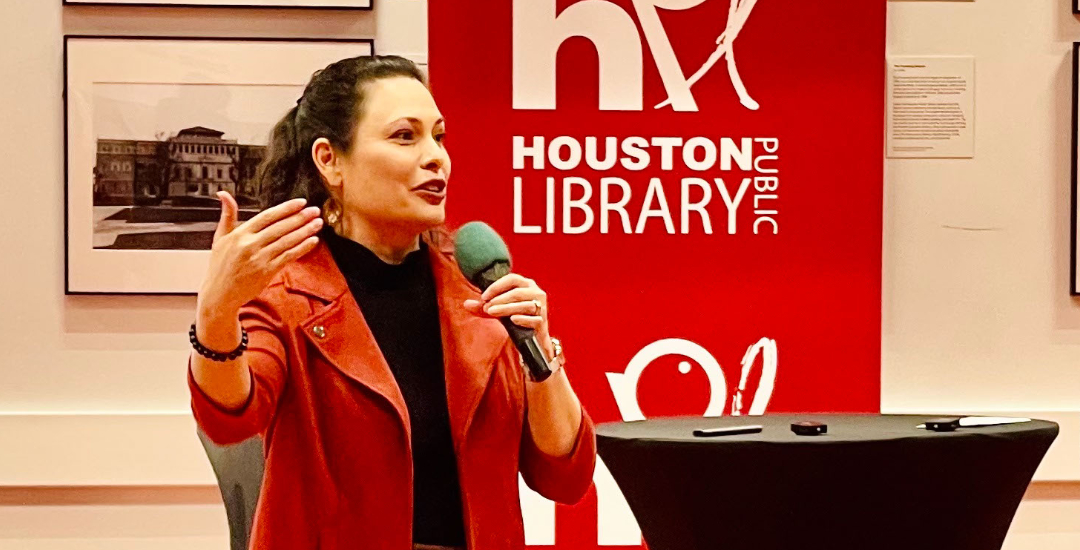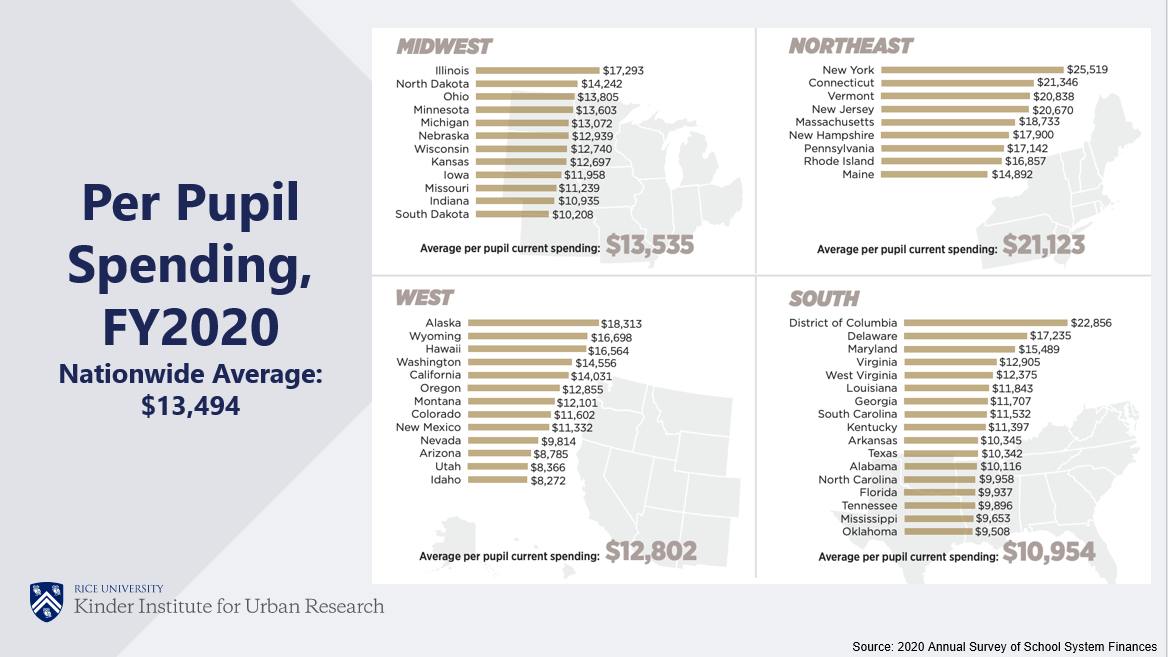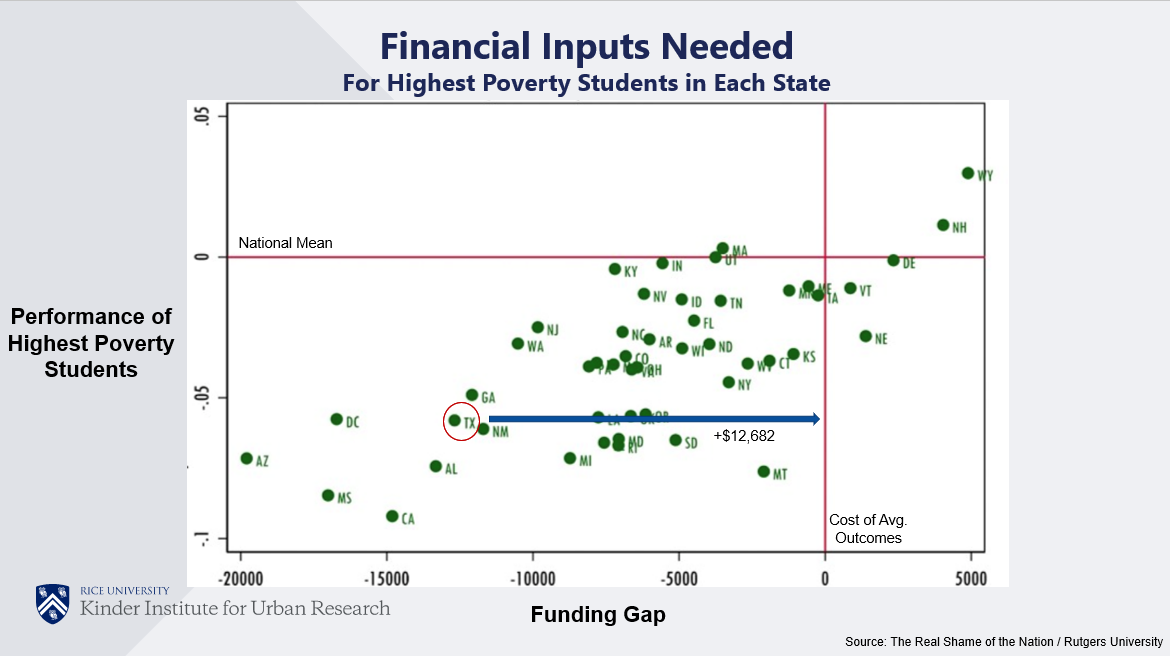But research shows that more investment will yield greater returns for these students, Turley said at a discussion presented by the Houston 2036 Taskforce on Equity.
Turley noted how financial inputs, broadly defined as students’ access to resources at home, school or in their community, have a direct impact on their outputs — performance in school, employment, salary, imprisonment rates and behavioral outcomes.
“We should aim for equitable inputs,” Turley said. “We should make sure we give more to those who need more, especially when it comes to educational resources. However, when it comes to outputs, we should aim for equality across groups. Whether we’re comparing groups by gender, economic status, race and ethnicity or by English learner status, we should go after equal outputs on average by group.
“There’s room for a range of outcomes, but as a group, I believe that we should aim for equality of outputs. The way to get there is to aim for equity of inputs.”
According to the Annual Survey of School System Finances, Texas spent $10,342 per pupil in the 2020 fiscal year, more than $3,000 less than the national average. In most districts in the Houston area, that number is even lower, according to Texas Education Agency District Financial Actual Reports. For example, the Houston Independent School District invests $9,380 per pupil.
Facing lower financial inputs, HISD students are performing about a half-grade level below the national average, according to The Educational Opportunity Project at Stanford. Based on the average socioeconomic status of the families in HISD, the students are performing about as expected, Turley noted. However, when separated by race, Black and Hispanic students face significantly more challenges, with financial inputs driving outcomes.
“In HISD, Hispanic students are performing at about 0.65 [grade levels] below the national average,” Turley said. “Black students in HISD are performing about 1.31 grades below national average. White students are performing about 2.3 grade levels above the national average. They are doing phenomenally well but are highly economically advantaged.” All three groups’ performance reflects their socioeconomic status.
Referencing estimates from Rutgers University, Turley said states with larger spending gaps for their poorest students have larger performance gaps. Texas would need an additional $12,000 in per pupil funding to bring the poorest students to national average outcomes.
“There is hope,” Turley said. “We have research that shows that when we invest properly and equitably in our poorest students, they perform better than the national average. There’s a clear return on that investment. It will improve their performance and their life outcomes. For example, when education levels go up and performance goes up, crime and incarceration rates go down. It’s all connected.”
The discussion was moderated by Larry Payne, the director of strategic partnerships, civic engagement, and critical conversations for the Houston Public Library.
“The road to equity is through empathy,” Payne said. “It all boils down to action. We’ve done the talking, we’ve done the research, and we have the data. We just need to figure out what the actions are and make them happen.”




